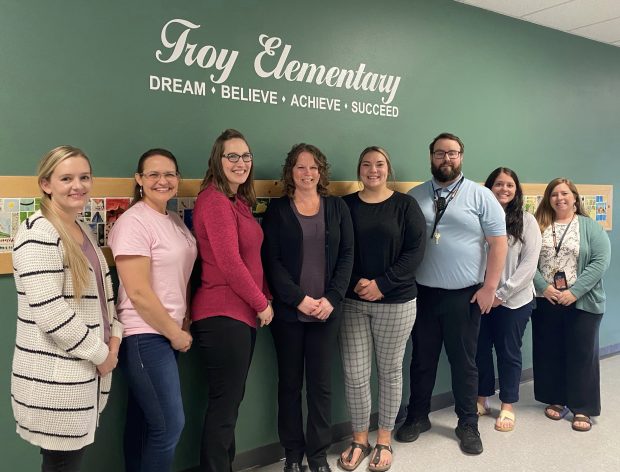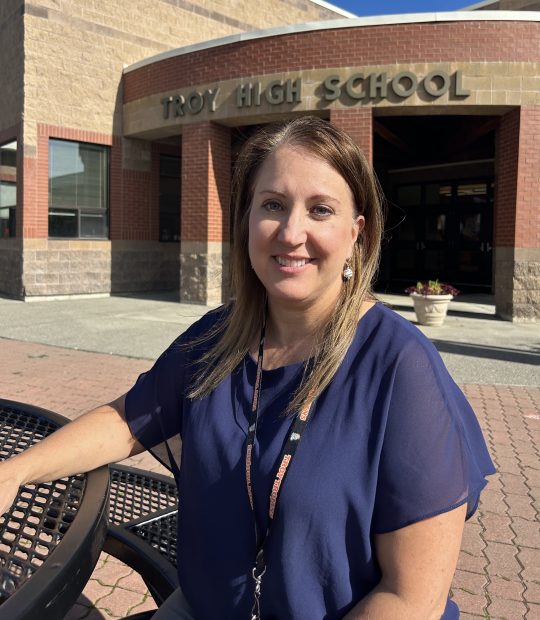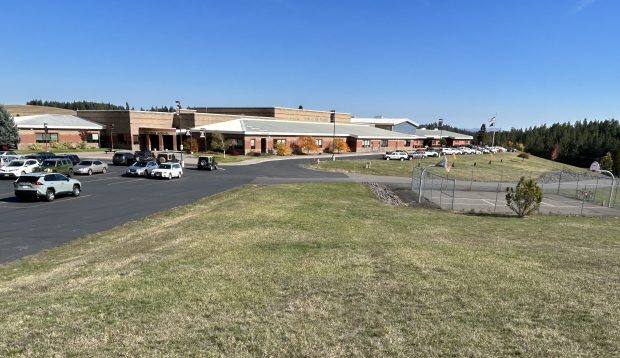
TROY — Ranked highly successful academically, tiny Troy School District in North Idaho sits among the largest and best performing districts in the state.
Troy scored better than 105 districts in English language arts and 101 districts in math, out of 115 school districts. And for the past six years, Troy’s math and English scores rank in or near the top 10. When this year’s Idaho Standards Achievement Test results were released, Troy was listed — again — among the highest performers, 13 spots higher than West Ada in English language arts and six spots higher in math.

But these two highly successful districts exist in different worlds.
If you didn’t have a reason to stop in Troy, you would drive right through the rural bedroom community, barely noticing. Moscow is 12 miles west. Troy’s enrollment of 320 students is less than 1% of West Ada’s 39,000; there are 2,200 teachers in West Ada and 22 in Troy; and Troy’s budget is $282 million less, at just under $4 million.
Behind the town’s modest facade is a unique school culture that’s embraced a proven collaborative model and accountability to the community it serves.
“It’s fun and healthy to look at where we are at (academically) versus other districts,” said superintendent Klaire Vogt. “The support we receive from the community tells us the community has high expectations.”
Everyone has multiple roles
Many on staff fill multiple roles. “Nobody does just one thing,” said Vogt, who’s also the special education director, federal programs director and elementary school principal.
The K-12 counselor is the testing coordinator, homeless liaison and the college and career advisor. The high school principal is also the junior high school principal. The elementary school secretary is also a testing coordinator and helps with food service at lunchtime.
Teacher turnover is slim to none, Vogt said. “We live in a happy little bubble and nobody believes me.”
Eight of the district’s 22 teachers graduated from Troy High School and three school board trustees — Pam Hilliard, Wendy Fredrickson and Kyle Osborne — also attended.
“There’s a strong connection between the school and our community,” Vogt said. “And maybe this is the benefit of having a small school but each of those kiddos count as a face. We know each of them and we don’t want anything less than the best for them. Whatever level they’re at, we want them to grow, and we expect that out of them.”
A culture of success
Vogt and high school principal Aaron Dail say community support, a collaborative culture and Beyond Textbooks underpin their success. Beyond Textbooks aligns their focus so they are working toward common goals and standards — a common approach among multiple disciplines.

“We do not have to reinvent the wheel every school year, or at each meeting because we have target goals that guide our practice and help us to band together when we face adversity. This helps to create a sense of unity among our staff that does not view our students as ‘history students’ or ‘math students’ but rather spurs us to look at new ways to support our students in achieving their mastery and creating successful habits,” Dail said.
The partnership with Beyond Textbooks costs the district around $10,000 annually. Year-one costs can vary depending on the size of your district. It takes Idaho standards and aligns them completely from kindergarten through 12th grade. It’s described as an instructional program of curriculum development, instructional improvement, student assessment and multi-level interventions.
“The framework tells you what you need to teach (which standards) and when to teach it,” Vogt said. “You’ll hear other districts say things like ‘well, we use this curriculum.’ No, we teach the standard. And I think that’s the difference.”
Using the program establishes district-wide expectations for what teachers should teach and what students should learn, in relation to a specific standard. After a 10-day lesson, for example, a formative assessment informs the next steps: Poor performers automatically join the reteach group and those who mastered the content receive enrichment that is built into the master calendar.
“You’re not going off and doing something else,” Vogt said.
Dail agrees: There’s a “commitment from all staff and faculty to work towards our shared goals, to communicate progress, to continue to reteach when students struggle and push students to enrichment when they have found mastery.”
The community is committed to excellence. “We have great participation with our parents at conferences, committees and extracurricular activities. Together this helps our school understand the basic values of the community and helps to encourage our staff and administration to hold students to high standards,” Dail said.
Vogt said the school is the hub of their community and they’ve made a commitment. “We certainly do not do excuses. It’s very personal among all the staff.”

Reaching high standards is not without great effort. “We have tried to communicate the importance of focusing on the process and not get too stressed out on the outcomes. We have found that when students learn how to embrace challenges, they are more apt to find success towards the end of the school year. Our community has been supportive in this process,” Dail said.
When a patron enters the school, they read a passage printed on the wall that sums up their approach: “Let us respect this building, as these walls were a gift from the Patrons of our community who saw each of us as a dream and a vision for the future! Let the future of these walls develop lives full of integrity and value.”
Listed here are three categories showing Troy’s performance in last year’s ISAT. The district is consistently a top performer on statewide assessments.
| School and (District) | ISAT ELA Top Performers by school |
| Twin Falls High (Twin Falls) | 90.7 |
| McCall-Donnelly High (McCall-Donnelly) | 85.8 |
| Timberlake High (Lakeland) | 85.3 |
| Moscow High (Moscow) | 84.8 |
| Paramount Elementary (West Ada) | 84.6 |
| Troy Junior/Senior High (Troy) | 84.2 |
| Owyhee High (West Ada) | 84.2 |
| Eagle High (West Ada) | 84 |
| Mountain View High (West Ada) | 83.2 |
| Coeur d’Alene High (Coeur d’Alene) | 81.2 |
| Traditional School District | ISAT ELA: Top Performers by district |
| Swan Valley Elementary | 80 |
| Rockland | 78 |
| Troy | 75.3 |
| Genesee | 71.3 |
| Kootenai | 70.1 |
| Cottonwood | 70 |
| McCall-Donnelly | 68.9 |
| West Ada | 68.7 |
| Moscow | 66.9 |
| Grace | 63.2 |
| Traditional School District | ISAT math: Top Performers by district |
| Cottonwood | 71.5 |
| Rockland | 71 |
| Troy | 66.9 |
| Genesee | 65.4 |
| West Side | 57.8 |
| West Ada | 57.7 |
| Swan Valley Elementary | 56.7 |
| Murtaugh | 56.3 |
| Cascade | 55.3 |
| Kootenai | 55.2 |
EdNews Data Analyst Randy Schrader contributed to this report.

